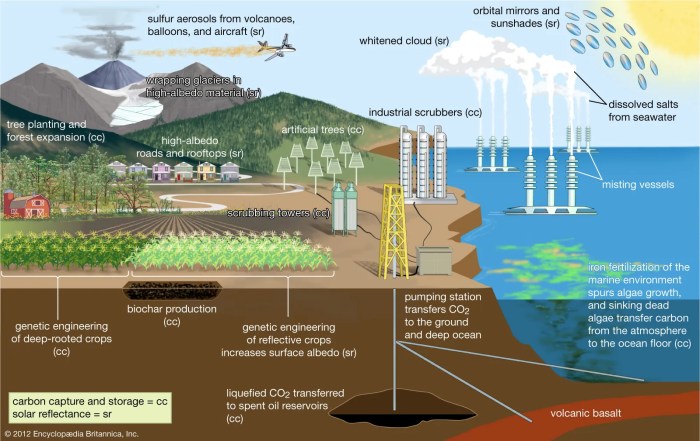Solar geoengineering climate crisis europe – it’s a phrase that sparks both curiosity and concern. The idea of intentionally manipulating the Earth’s climate to combat the effects of global warming is both intriguing and potentially risky. But with Europe facing the harsh realities of a changing climate, including rising temperatures, extreme weather events, and sea level rise, could solar geoengineering offer a glimmer of hope?
This blog post delves into the potential of solar geoengineering to address Europe’s climate crisis, exploring its benefits, risks, and the complex ethical and societal considerations involved. We’ll examine the different methods of solar geoengineering, analyze its potential impact on Europe’s environment and society, and discuss the crucial role of research, governance, and public engagement in shaping the future of this controversial technology.
Research and Development in Solar Geoengineering
Solar geoengineering, the intentional modification of Earth’s climate system to counteract global warming, has gained significant attention as a potential strategy to mitigate the impacts of climate change. While research in this field is still in its early stages, there are ongoing efforts to understand the feasibility, risks, and potential benefits of solar geoengineering.
Key Research Areas and Technological Advancements
Research in solar geoengineering is focused on understanding the science behind different methods, assessing their effectiveness, and evaluating potential risks and side effects. Key research areas include:
- Stratospheric Aerosol Injection (SAI):This method involves injecting reflective particles, such as sulfur dioxide, into the stratosphere to increase the Earth’s reflectivity and reflect more sunlight back into space. Research focuses on understanding the optimal particle size, composition, and injection techniques to maximize effectiveness and minimize potential environmental impacts.
- Marine Cloud Brightening (MCB):This method involves enhancing the reflectivity of marine clouds by increasing the concentration of cloud condensation nuclei (CCN). This could be achieved by injecting seawater into the atmosphere or by using other techniques to create more CCN. Research explores the feasibility and potential impacts of different MCB approaches.
- Cirrus Cloud Thinning:This method involves reducing the thickness of cirrus clouds, which can trap heat. Research investigates ways to modify cirrus cloud properties using lasers or other technologies to enhance their reflectivity and reduce their heat-trapping capacity.
- Space-Based Solar Radiation Management (SRM):This approach involves deploying large reflective structures in space to block sunlight before it reaches Earth. While still in its early conceptual stages, research explores the potential for space-based SRM and the technological challenges involved.
Role of International Cooperation
International cooperation is crucial for advancing research and development in solar geoengineering. This includes:
- Sharing research findings and data:Collaborative efforts are needed to share data, models, and findings to accelerate progress and ensure scientific rigor.
- Developing ethical and governance frameworks:International cooperation is essential to develop ethical guidelines and governance frameworks for research and deployment of solar geoengineering technologies.
- Coordination of field experiments:Carefully designed and coordinated field experiments are necessary to assess the effectiveness and potential risks of solar geoengineering techniques.
Potential for Innovation and Commercialization
The field of solar geoengineering holds potential for innovation and commercialization, particularly in the development of:
- Advanced materials and technologies:Innovation in materials science and engineering is crucial for developing effective and environmentally sound solar geoengineering technologies.
- Modeling and simulation tools:Sophisticated models and simulation tools are needed to predict the impacts of solar geoengineering on climate and the environment.
- Delivery systems:Research and development of efficient and reliable delivery systems for injecting particles into the atmosphere are critical for the feasibility of SAI and other solar geoengineering approaches.
Governance and Regulation of Solar Geoengineering: Solar Geoengineering Climate Crisis Europe

Solar geoengineering, a potential climate intervention strategy, involves intentionally modifying Earth’s climate system to mitigate the effects of climate change. While research and development in this field are ongoing, the governance and regulation of such technologies are crucial to ensure their responsible and ethical deployment.
This section delves into the framework for governing and regulating solar geoengineering in Europe, identifying key stakeholders and exploring the potential for international agreements.
Check new eu battery regulations spell trouble for manufacturers tech giants to inspect complete evaluations and testimonials from users.
Framework for Governance and Regulation
The governance and regulation of solar geoengineering in Europe should be built on a robust framework that addresses ethical, legal, and societal concerns. This framework should prioritize transparency, public engagement, and international collaboration.
- Establish a dedicated governance body:A dedicated body, such as a European Solar Geoengineering Commission, could be established to oversee research, development, and potential deployment of solar geoengineering technologies. This body would be responsible for setting ethical guidelines, assessing risks and benefits, and developing regulatory frameworks.
- Develop a comprehensive legal framework:A clear and comprehensive legal framework is essential to address potential risks and liabilities associated with solar geoengineering. This framework should cover aspects such as environmental impact assessments, liability for potential harm, and the allocation of responsibilities among stakeholders.
- Promote transparency and public engagement:Open and transparent communication about solar geoengineering is crucial to build public trust and ensure informed decision-making. This involves providing accessible information about research findings, potential risks and benefits, and the decision-making process. Public engagement initiatives, such as public hearings and consultations, should be implemented to gather diverse perspectives and feedback.
Key Stakeholders
Effective governance of solar geoengineering requires the involvement of a wide range of stakeholders, including:
- Governments:National governments play a crucial role in setting policy frameworks, allocating resources, and coordinating international cooperation on solar geoengineering.
- Scientific community:Scientists are responsible for conducting research, assessing risks and benefits, and providing evidence-based advice to policymakers.
- Industry:Companies involved in the development and deployment of solar geoengineering technologies need to be held accountable for their actions and adhere to ethical and regulatory standards.
- Civil society:Non-governmental organizations (NGOs), environmental groups, and community organizations have a vital role in raising awareness, advocating for ethical considerations, and representing the interests of affected communities.
- International organizations:International organizations, such as the United Nations, can facilitate global cooperation, set standards, and monitor compliance with international agreements.
Potential for International Agreements
Given the global implications of solar geoengineering, international agreements and protocols are crucial to ensure responsible and coordinated governance.
- Global Research Governance Framework:A global framework for governing research on solar geoengineering could be established to promote responsible research practices, share knowledge, and prevent uncontrolled experimentation.
- International Treaty on Climate Engineering:An international treaty specifically addressing climate engineering, including solar geoengineering, could provide a legally binding framework for governance, including ethical considerations, risk assessment, and decision-making processes.
- International Monitoring and Verification Mechanisms:Establishing international monitoring and verification mechanisms to track the potential effects of solar geoengineering and ensure compliance with agreed-upon standards is essential.
Public Perception and Engagement
Public perception and engagement are crucial for any technology, particularly one as complex and potentially impactful as solar geoengineering. Understanding public attitudes and fostering informed dialogue is essential for responsible development and deployment of this technology.
Public Attitudes and Perceptions
Public attitudes towards solar geoengineering in Europe are diverse and evolving. Studies indicate a general lack of awareness about the technology, with varying levels of concern and support. Factors influencing public perception include:
- Level of awareness:A significant portion of the public remains unaware of solar geoengineering, highlighting the need for increased public education and communication.
- Trust in institutions:Public trust in institutions involved in research and governance of solar geoengineering plays a significant role in shaping attitudes.
- Ethical concerns:Concerns about potential unintended consequences, equitable distribution of benefits, and governance challenges are often cited as reasons for skepticism or opposition.
- Perceived risks:Public perception of the risks associated with solar geoengineering, such as potential environmental side effects or unintended consequences, can significantly influence attitudes.
Importance of Public Engagement and Education, Solar geoengineering climate crisis europe
Public engagement and education are vital for building trust, fostering informed dialogue, and ensuring that the development and deployment of solar geoengineering are guided by public values and concerns.
- Informed decision-making:Public engagement enables individuals to understand the complexities of solar geoengineering, weigh the potential benefits and risks, and participate in decision-making processes.
- Building trust:Transparent communication and open dialogue can help build trust between the public and researchers, policymakers, and other stakeholders involved in solar geoengineering.
- Addressing ethical concerns:Public engagement provides a platform for discussing and addressing ethical concerns, ensuring that the technology is developed and deployed in a responsible and equitable manner.
- Promoting accountability:Public engagement helps hold researchers and policymakers accountable for their decisions and actions related to solar geoengineering.
Communication Strategy for Public Engagement
Developing a comprehensive communication strategy is essential for effectively engaging the public in discussions about solar geoengineering. Key elements of such a strategy include:
- Clear and accessible language:Using clear and concise language, avoiding technical jargon, and tailoring information to different audiences can enhance public understanding.
- Diverse communication channels:Utilizing a range of communication channels, such as online platforms, traditional media, public forums, and community events, can reach a broader audience.
- Interactive engagement:Encouraging public participation through surveys, online forums, workshops, and other interactive activities can foster dialogue and gather diverse perspectives.
- Transparency and accountability:Maintaining transparency in research, governance, and decision-making processes is crucial for building public trust.
- Addressing concerns:Actively engaging with public concerns and providing evidence-based responses can help build trust and foster constructive dialogue.
Case Studies and Examples

This section explores real-world applications of solar geoengineering in Europe, examining potential benefits and risks in different regions. It aims to provide a deeper understanding of how this technology could be used to address specific climate change challenges and its potential implications.
Solar Geoengineering in Europe: Case Studies
Solar geoengineering could be applied in various ways to address specific climate change challenges in Europe.
Mediterranean Region
The Mediterranean region is particularly vulnerable to climate change, experiencing increased heatwaves, droughts, and sea-level rise. Solar geoengineering could help mitigate these impacts by reducing the amount of sunlight reaching the Earth’s surface, leading to:
- Reduced temperatures, potentially easing heatwaves and improving agricultural yields.
- Increased precipitation, potentially alleviating drought conditions.
- Slower sea-level rise, providing more time for adaptation measures.
However, potential risks associated with solar geoengineering in this region include:
- Altered precipitation patterns, potentially leading to more extreme rainfall events and flooding.
- Impacts on marine ecosystems, potentially disrupting fisheries and tourism.
- Unforeseen consequences, as the effects of solar geoengineering on complex systems are not fully understood.
Arctic Region
The Arctic region is experiencing rapid warming, leading to melting sea ice and permafrost thawing. Solar geoengineering could potentially slow down these processes by:
- Reducing the amount of sunlight reaching the Arctic, slowing down ice melt and permafrost thawing.
- Preserving Arctic ecosystems, including polar bears and other wildlife.
- Reducing sea-level rise, as melting glaciers and ice sheets contribute significantly to it.
However, risks associated with solar geoengineering in the Arctic include:
- Impacts on Arctic ecosystems, potentially disrupting food chains and altering wildlife migration patterns.
- Altered weather patterns, potentially leading to more extreme weather events in the region.
- Unforeseen consequences, as the effects of solar geoengineering on complex systems are not fully understood.
Comparison of Solar Geoengineering Methods
The following table compares and contrasts different methods of solar geoengineering, their potential applications, and associated risks:





